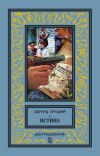Текст книги "Английский язык для студентов заочной формы обучения"

Автор книги: Татьяна Минакова
Жанр: Иностранные языки, Наука и Образование
сообщить о неприемлемом содержимом
Текущая страница: 3 (всего у книги 14 страниц) [доступный отрывок для чтения: 5 страниц]
2.2.4.1 Задание 1. Прочитайте и запомните следующие слова и словосочетания:
owner – собственник, владелец;
operator – владелец предприятия;
franchise – франшиза;
distribute goods – распространять (распределять) товары;
sell smth at retail – продавать в розницу;
management consulting – консалтинг по менеджменту;
preserve competition – сохранить конкуренцию;
prevent monopolistic control – предотвратить монополистический контроль;
benefits of competition – преимущества конкуренции;
incentive – стимул, побудительный мотив;
procurement assistance – материально-техническая помощь;
gross national product – валовой национальный продукт;
create new jobs – создавать новые рабочие места;
supply – снабжать, поставлять;
ownership – собственность;
retailing – розничная торговля;
wholesaling – оптовая торговля;
manufacturing – производство;
total assets – общая стоимость имущества, сумма баланса;
net worth – стоимость имущества за вычетом обязательств, собственный капитал (предприятия);
gross profits – валовая прибыль;
net profits – чистая прибыль;
payroll – платежная ведомость;
net receipts – чистая выручка, чистые доходы, чисты денежные поступления;
total sales – общий объем продаж, товарооборот;
return – возмещение, возврат; pl. возвращенный товар; возвращенные чеки, векселя;
allowances – начисления (например сумма накладных расходов;
keep records – вести учет;
tax – налог;
bank loan – банковская ссуда;
partnership – партнерство;
business premises – 1) торговое помещение; 2) помещение фирмы;
labour force – рабочая сила;
business failure – коммерческий крах;
profit – прибыль;
assets – активы, фонды, средства liabilities – пассивы;
денежные обязательства, долги;
earnings – 1) заработок pl.; 2) доход, прибыль, поступление;
advertising agency – рекламное агентство;
warehouse – склад;
оптовый магазин;
tangible – материальный;
intangible – нематериальный;
notes receivable – амер. векселя к получению;
cash – наличность;
equipment – оборудование;
real estate – недвижимость;
retail business – розничная торговля;
surplus – 1) излишек, избыток; 2) нераспределенная прибыль;
total receipts – общая сумма поступления;
bookkeeping – бухгалтерский учет;
merchandise – товары;
money borrowed – деньги, взятые взаймы;
in bulk orders – заказ в большом количестве;
financial investment – финансовые инвестиции.
2.2.4.2 Задание 2. Прочитайте текст переведите его письменно
Today small businesses are the heart of the market economy. There are a great number and variety of small businesses. People become owners and operators of small business firms in one of three ways: start a new firm, buy a franchise, buy or inherit an existing firm.
Small firms have been established to do just about any kind of business imaginable. They have been established to manufacture and distribute goods, to sell them at retail, and, of course, to provide all kinds of needed services. Some serve only the local community, while others function in national and international markets.
The vast majority of small firms concentrate on selling material products, although an increasing number of firms provide a service. Although an increasing number operate in local markets, services, too, are exported. In recent years there has been a great increase in the export of services, such as management consulting, medical, and technological services.
The existence of a strong, healthy small business community has always been recognized as the best way to preserve competition, prevent monopolistic control of any industries, and thus assure the population of the benefits of competition through better prices and quality products. Incentives have been provided to assist small firms. The government of the US created the Small Business Administration (SBA) in 1954 to provide financial, management, and procurement assistance for small firms.
There are some facts that illustrate the importance of small business. According to the Small Business Administration:
– 99 % of all businesses in the US can be classified as small;
– 43 % of the gross national product is contributed by small business;
– while large business has been cutting back employment, small business has been creating new jobs;
– many of new products and services in the US are created by small businesses.
Numerous definitions of the term "small business" exist. A small business is one which is independently owned and operated and not dominant in its field of operation. A small business is one which possesses at least two of the following four characteristics: 1) management of the firm is independent. Usually the managers are also the owners; 2) capital is supplied and the ownership is held by an individual or a small group; 3) the area of operation is mainly local, with the workers and owners living in one home community. However, the markets need not be local; 4) the relative size of the firm within its industry must be small when compared with the biggest units in its field. Of the characteristics cited, most scholars believe that the fourth, relative size, is the most important.
The SBA traditionally uses the following criteria for defining small business: retailing (sales volume), service (sales volume), wholesaling (sales volume), manufacturing (number of employees).
The following is a list of terms that can be used to describe a business. Each term tells something about the size of a business. Total assets – all that a business owns.
Net worth – business assets less what is owed.
Gross profits – money left from sales after all expenses (except taxes) have been paid.
Net profits – what is left from gross profit after business income taxes are paid. Employees – total number of workers and managers listed on the payroll.
Income– net receipts, the total sales less returns, allowances, and discounts.
It is necessary to keep records of a business for tax purposes and as a measure of growth. Some businesses fail because they are improperly expanded. Other businesses are unsuccessful because they expand too quickly and cannot handle problems that come with rapid growth. Many businesses remain small and provide excellent income throughout their lifetime.
Business operations are subject to review by local, state, and federal authorities. These reviews insure that rules and regulations are being obeyed and standards maintained. Some of the operations subject to review are listed here.
Income. Business income must be reported for income tax purposes. Other reasons for reporting business income include providing information for bank loans, attracting investors, making equitable distribution of profits in partnership, and as a measure of business growth. The records are usually subject to an audit.
Working conditions. Clean and safe working conditions must be provided for employees and if required, medical and safety equipment must be provided.
Wages and hours. Work regulations and announcements must be posted where employees ,can read them. Employers must pay at least the minimum wagelthat applies to their employees.
Advertising, labelling, and packaging. Businesses must not be guilty of false advertising, mislabeling, or providing less than the labeled weight in a package.
Unfair practices. Laws prevent business persons from engaging in various unfair practices, such as price fixing, and other means of restraining trade.
Discrimination. Federal and state regulations prevent an employee from being discriminated against because of color, race, sex, religion, or national origin.
Liability and соmpensatiоn. Employers are required to carry insurance and provide adequate compensation for workers injured on the job and customers injured on the business premises.
2.2.4.3 Ответьте на вопросы по тексту
1) How do people become owners and operators of small business firms?
2) What are the aims of establishing small firms?
3) What has always been recognized as the best way to preserve competition, prevent monopolistic control of any industries?
4) What facts illustrate the importance of small business?
5) Can you define a small business?
6) What is the most important characteristic of a small business?
7) What criteria are used for defining small business?
8) What terms describe the size of a business?
9) What operations of a small business are subject to review?
2.2.5 Тексты для студентов специальности «Налоги и налогообложение2.2.5.1 Задание 1. Прочитайте и запомните следующие слова и словосочетания:
tax /levy – налог
levy/impose taxes. syn. to tax – облагать налогом и собирать взимать налоги
tax burden – налоговое бремя
direct tax – прямой налог indirect tax – косвенный налог (на товары и услуги)
personal income tax – налог на доходы граждан/физических лиц
tax-payer – налогоплательщик
excise (duty) – акциз, акцизный сбор
corporation/company tax – налог на прибыль корпорации/компании
tax rate – налоговая ставка
tax base – база налогового обложения
tax administration – порядок взимания налогов, администрирование
social insurance tax – социальный налог
tax revenues – налоговые поступления, доходы от налогов
value added tax (VAT) – налог на добавленную стоимость – НДС
tax – exempt – свободный от уплаты налогов
overall tax intake – общая сумма налогов
eanings – доход equity [‘ekviti] – соразмерность налога доходу
corporate – организация, обладающая правами юридического лица
individual – физическое лицо
depreciation – обесценивание, амортизация
Tax Code – налоговый кодекс
allowance – скидка, льгота
2.2.5.2 Задание 2. Прочитайте тексты А, В, С, D переведите их письменно
Text A. Taxes and Fiscal Policy
In every society governments spend money on, goods and services for people as national defence, public education, transport and others. As a rule, government expenditure spending is chiefly financed through imposing taxes. A tax is money one must pay to the government to support its different programs. Hence, a system used by governments to collect taxes from people and organizations is called taxation. To put it differently taxation is the process by which people pay the expenses carried by the government. With in an economy there exists an instrument which is used to regulate taxation and government spending. This instrument is fiscal policy. Taxes and fiscal policy are actually parts of an economic circle as shown in the figure below:

In the case when government expenditures are exactly equal to tax revenues in a given year the government is running a balanced budget far that year. By increasing or decreasing its spending or taxing programs, the government may reduce or increase demand for goods and services. If the government reduces its own spending, it buys less from businesses, reducing sales and earnings, and people have less money to spend. In a similar way, if the government raises taxes, people have less money to spend. Moreover, spending and taxing policies work together to the same effect. For example, if the government taxes to a greater extent than it spends, it causes reduction in the flow of income to people and businesses. Because this reduces aggregate goods and services, it is a method for fighting inflation. If the government is to increase spending it creates a budget deficit, a situation in which more money has been spent than it is available. Fiscal policy uses budget deficits to promote economic stability and growth. In addition, governments through budget make transfer payments to some members of society. A transfer, is a payment for which no corresponding service is provided in return (в ответ). Examples are retirement pensions and unemployment benefits.
Text B.
Taxation is as old as government. Even the earliest and simplest societies needed some method of maintaining order and providing for justice and those services could not be provided without cost. It is to a greater extent necessary in a modern state: without it, it would not be possible to pay the soldiers who protect us or pay for things that we need just as much as we need somewhere live as something to eat.
But though everyone knows that taxation is necessary, different people have different ideas about how taxation should be arranged. Should each person have to pay a certain amount of money to the government each year? Or should there be a tax on things that people buy and sell? If the first kind of taxation is used, should everyone pay the same tax whether he is rich or poor? If the second of taxation is preferred, should everything be taxed equally?
In most countries, a direct tax on persons, which is called income tax exists. It is arranged in such a way, that the poorest people pay nothing, and the percentage of tax grows greater as the taxpayer’s income grows.
But countries with direct taxation nearly always have indirect taxation, too. Many things imported into the country pay taxes or “duties”. Of course, it is the men and women who buy these imported things in the shops who really have to pay the duties, in the shops. If the most necessary things are taxed, a lot of money is collected, but the poor people suffer most. If unnecessary things like jewels and far coals are taxed less money is collected, but the tax is fairer as the rich pay it.
Countries vary in the balance of their taxation: some rely more on direct taxes while others prefer indirect taxation.
Text C. Types of Taxes
Taxation is very complex, and here we can outline only the most important categories. Thus taxes can be divided into federal, regional and local depending on the area and place of residence. Depending on the way taxes are levied, they are divided into direct and indirect ones.
Text D. Direct Taxes
Direct taxes are taxes paid on income or capital of individuals persons or corporals. The example are personal income tax, corporation company tax on profits, social insurance tax and some other. Indirect taxes are those paid on goods and services, that is when money is spent. Examples are value added tax (VAT) customs and excise duties. Income tax is the most significant countries, it forms the largest part of revenues collected by the government. In Russia the income tax is only 13 % whereas in Britain it usually is as much as 30 %. Also, income tax tends to treat different a people equally. The idea is: the largest a person’s earnings, the this tax is at least potentially, a progressive one: more is paid as income rises. This may become a drawback of there is no incentive to work harder because people may feel that they earn relatively less and pay more tax. If nearly half of what people earn goes to the government, they might prefer to work fewer hours and spend more time in the garden or watching TV.
However, if income tax is truly progressive it is an important means of increasing the elastically of the tax structure.
It is also worth nothing that income tax is rather a simple one to collect, as many employers pay the tax directly for the employees, deducting it from the salary before it is paid.
What is most needed to make income tax more effective and fair is a radical improvement of its administration.
2.2.5.3 Задание 1. Ответьте на вопросы по текстам А, B,С, D
1 What do governments spend money on in every society?
2 Trough what is government expenditure spending financed?
3 What is a tax?
4 What does fiscal policy mean?
5 How may the government reduce or increase demand for goods and services?
6 When do people have less money to spend?
7 What does fiscal policy use to promote economic stability and growth?
8 What questions occur about how taxation should be arranged?
9 How do countries vary in the balance of their taxation?
10 What does direct taxes mean?
11 What does indirect taxes mean?
2.2.6 Тексты для студентов специальности «Документоведение и документационное обеспечение управления»2.2.6.1 Задание 1. Прочитайте и запомните следующие слова и словосочетания:
essential part – основная часть;
business paper – деловые бумаги;
recipient – получатель;
to intend – предназначать;
impression – впечатление;
agreement – соглашение;
venture – смелое предприятие, осмеливаться;
to involve – вовлекать;
negotiation – переговоры;
to draft – проект, набросок;
to enforce – следить за соблюдением;
to avoid – избегать;
inquiry – запрос;
offer – предложение, предлагать;
order – приказ, заказ;
quotation – цена (продавца);
to reply – отвечать;
customer – потребитель, клиент;
consignment – партия;
approach – предложение, подход;
delivery – доставка;
insurance – страхование, страховка.
2.2.6.2 Задание 2. Прочитайте тексты и переведите их письменно
Text. English business letters
Letter writing is an essential part of business communication. A cheque, a contract or any other business paper sent by mail should always be accompanied by a letter. The letter says what is being sent, so that the recipient should know exactly what you intended to send. It is a typical business letter called «routine».
A well arranged letter will make a better impression on the reader, thus good letters make good business partners.
Nowadays more and more agreements are made in English, for English is a universal business language. Joint ventures, bank loans, and trademark licenses are frequently written in English.
There are three stages of transactions involving business contracts: first – negotiation of terms, second – drafting documents reflecting these terms, and third – litigation (спор) to enforce or to avoid executing of these terms.
Business letters may be divided into official and semi-official. The first kind of letters is characteristic of those people working in business: an executive, a department manager, a salesman, a secretary or a specialist in business and technology. But also many people may want to buy something, to accept an invitation or to congratulate somebody – this is a kind of semi-official letters. The first kind of letters may in turn be subdivided into such groups as: inquiries, offers, orders, and so on.
Example 1. An inquiry letter
HOWARD & PRATTLadies' Clothing306, 3d AvenueChicago, 111. 60602
JACKSON & MILES
118 Regent Street
London WIC 37D
UK
Gentlemen: 21 Oct, 2000
We saw your women's dresses and suits in your October catalogue. The lines you showed would be most suitable for our market.
Would you kindly send us your quotation for spring and summer clothing that you could supply to us by the end of January next.
We would require 2,000 dresses and suits in each of the sizes 10-14, and 500 in sizes 8 and 16. Please quote c.i.f. Chicago prices.
Payment is normally made by letter of credit. Thank you for an early reply.
Very truly yours,
P.Pratt
P.PRATT.Jr
Buyer
NOTES: In the first part of a letter there is a kind of introduction as a prospective customer approaches supplier for the first time, and it is from this part that we found out that the correspondents are engaged in textile industry.
The second part expresses request for detailed information about the goods in question, their prices and terms of possible transaction.
In this example we come across the abbreviation concerning the terms of delivery, that are commonly accepted in business world.
c. i.f. – cost, insurance, freight.
If consignment is to be delivered according to c.i.f., then the supplier insures the goods and pays for the whole delivery.
f. o.b. – free on board.
If consignment is to be delivered according to f.o.b., then the supplier pays for transportation to port, ship or air shipment and dispatch; and the customer pay» for onward transportation and insurance.
f. o.r. – free on rail.
It is the same as f.o.b., but for railway transportation. с & f – cost and freight.
If consignment is to be delivered according to с & f, then the supplier pays for the whole delivery and the customer – for insurance,
Example 2. The answering letter
JACKSON & MILES118 Regent StreetLondon WIC 37DUK
HOWARD & PRATT
Ladies' Clothing
306, 3d Avenue
Chicago, 111. 60602
28 Oct, 2000
Dear Sirs,
We are pleased to make you an offer regarding our products in the size you require. Nearly all the mod responsible for making decisions and taking risks. To operate successfully you need to follow well defined instructions and you prefer work that is both regular and predictable.
2.2.6.3 Задание 3. Ответьте на вопросы по тексту
1 What is an essential part of business communication?
2 What should all business paper sent by mail be accompanied by?
3 What does the business letter say?
4 How is a typical business letter called?
5 Why is it important to make business letter well?
6 Why are more agreements, made in English?
7 What are three stages of transactions involving business contracts?
8 How may business letters be divided?
9 What do we call “a semi-official letters”?
Правообладателям!
Данное произведение размещено по согласованию с ООО "ЛитРес" (20% исходного текста). Если размещение книги нарушает чьи-либо права, то сообщите об этом.Читателям!
Оплатили, но не знаете что делать дальше?








































